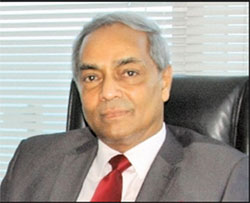Seylan Bank PTP exceed Rs 3 bn
Seylan Bank recorded an impressive Q3 performance with Profits before
VAT and Income Tax reaching Rs. 3,130 Million for the 9 months ended 30
September 2012 - a 120% growth over the corresponding period last year.
Profit before VAT and Income Tax (before the exceptional VRS costs) for
the 9 months ending September 2011 was Rs. 1,424 Million. Profits after
tax for the 9 months increased to Rs. 1,604 Million from Rs. 303 Million
recorded last year.
|

Chairman of Seylan Bank
Mohan Pieris PC |
Despite controlled credit expansion, the Bank’s strong performance
continued to be driven by growth in its Core Banking operations. Net
Interest income increased by 12% to Rs. 6,418 Million for Q3 2012,
resulting from selective growth in quality advances and effective
management of margins. Despite challenging market conditions the bank
was able to maintain its net interest margins at 4.95%, a slight
improvement as compared to 4.91% in December 2011.
Non-interest income increased from Rs. 1,698 Million to Rs. 1,816
Million in the 9-months of 2012. This was achieved despite a general
slowdown in import related activities, through diversifying into various
other trade finance and cash management services.
During the 9-months under review the Bank maintained its focus on
controlling its overhead costs. The efforts on improving cost
efficiencies have resulted in the improvement of the cost to income
ratio to 67%, a reduction of 6 percent from December 2011.
Chairman of Seylan Bank Mohan Pieris PC stated, “We are focused on
achieving our Strategic Plan, which we formulated in the latter part of
last year. This year’s record performance is a testament that we are
well on our way to achieve our targets. We have also taken steps to
improve our Capital and Governance structures for future growth that has
been planned”.
The Bank grew its deposits base by Rs. 13.8 Billion 15% (annualised)
and the Advances portfolio by Rs. 12.7 Billion 14% (annualised) despite
a fiercely competitive and rising interest rate environment. According
to General Manager/CEO Kapila Ariyaratne, “the bank has set its sights
on reducing this to a single digit by end 2013 through adding quality
assets, rehabilitating troubled loans and through effective recovery
strategies”. |





